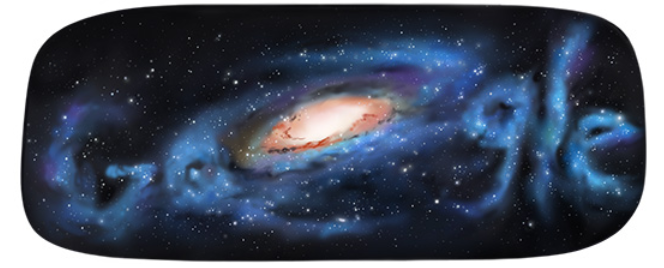The Australian Google Doodle today, 9 August 2013, is a spiral galaxy that celebrates 100 years since the birth of Wilbur Norman (Chris) Christiansen (1913 – 2007). Chris Christiansen had a long and distinguished career in science and engineering, including research in radioastronomy and several successful large-scale projects.
When he joined our Radiophysics Laboratory in 1948, he led research on “centimetre” observations (wavelengths of 25 and 50 cm) of the Sun. To study solar radiation and the quiet Sun, he developed a new type of aerial array known as a grating interferometer. This first grating interferometer was built at the Potts Hill reservoir in Sydney.
Later, in 1957, by adding a second array of aerials at right angles to the grating interferometer – at Fleurs in Western Sydney, near Badgery’s Creek – he was able to scan the Sun in two dimensions. Three cross-type telescopes were built at Fleurs, including one called the Chris Cross.
Christiansen is also known for his work in 1952 with his colleague James Hindman. Not long after the 21 cm spectral line (1420.4 MHz) from neutral hydrogen was first detected, Christian and Hindman built their own gear from scratch to confirm the discovery, and they also made the first survey of H-line emission from space. This was the first radio evidence of the existence of spiral arms in our Galaxy, the Milky Way.
Before joining CSIRO, Christiansen had been a radio engineer with AWA (Amalgamated Wireless (Australasia)). And in 1960, Christiansen was appointed to the Chair of Electrical Engineering at the University of Sydney. Read about his full career with our CSIROpedia entry.


